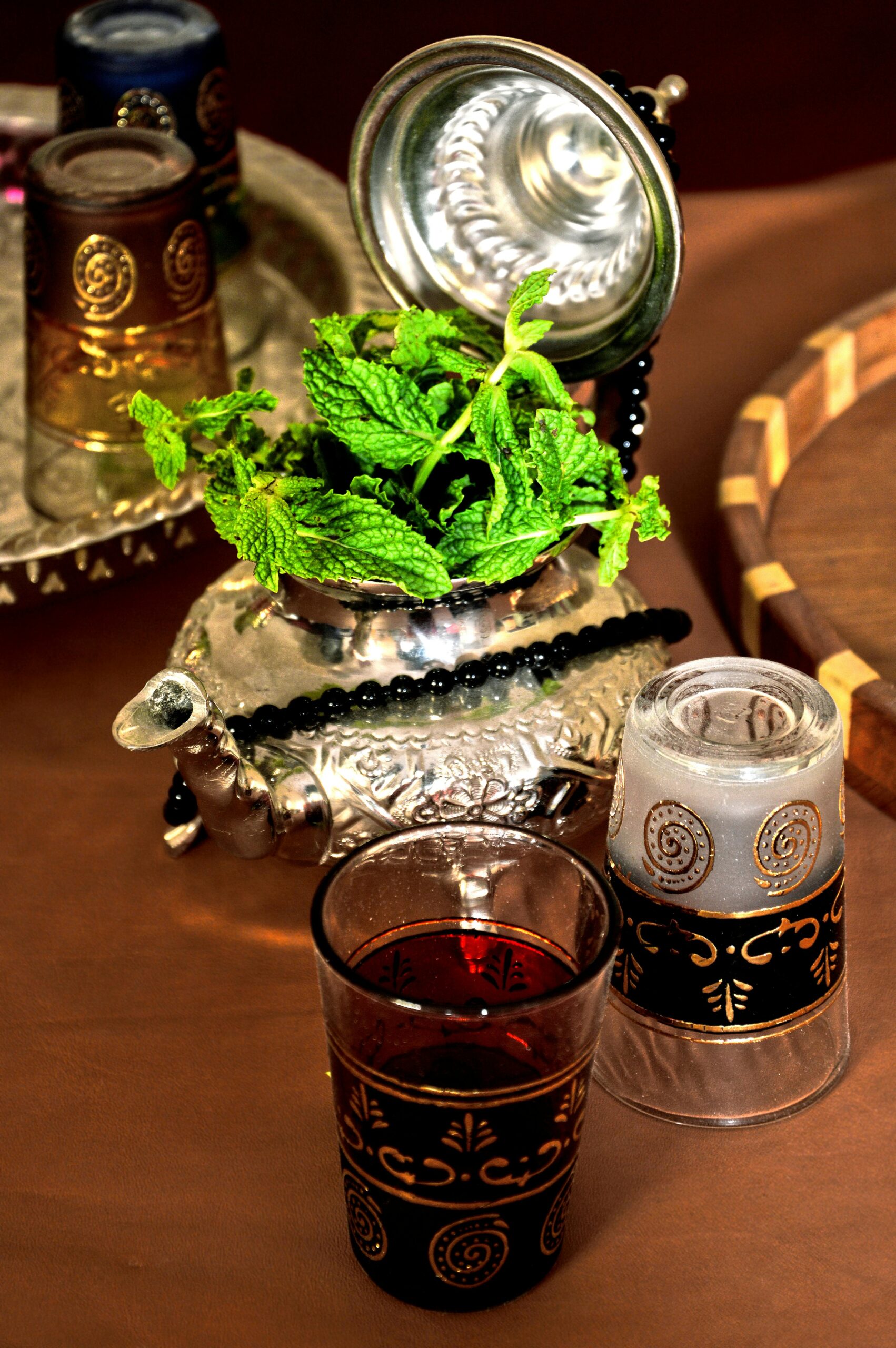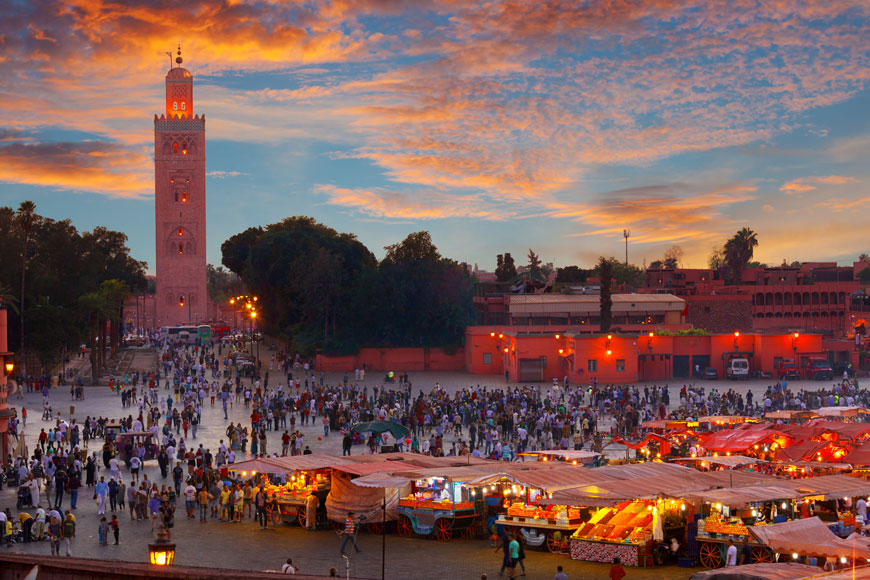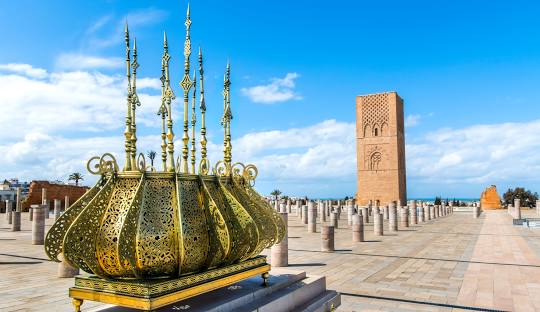
Mint Tea: A Symbol of Moroccan Hospitality
In Morocco, mint tea is more than just a drink; it’s an integral part of the country’s culture and hospitality. Known as “Atay” in Moroccan Arabic, this refreshing beverage is served to guests with warmth, respect, and generosity. It’s not only a treat for the senses but also a gesture of goodwill, making it a cornerstone of Moroccan social interactions. Whether in a bustling city like Marrakech, a quiet village in the Atlas Mountains, or a desert oasis, mint tea plays a vital role in Moroccan life.
1. A Welcome Ritual
When visiting a Moroccan home, one of the first things you’ll encounter is a steaming glass of mint tea. Offering tea to guests is a deeply ingrained tradition in Moroccan culture, symbolizing hospitality and friendship. It doesn’t matter whether you are a family member, a close friend, or a first-time visitor; the act of offering mint tea is a warm welcome, an invitation to connect, and an expression of kindness.
Tea is usually served with an accompanying spread of snacks, ranging from nuts and dried fruits to pastries. It’s a way of making guests feel at home, easing them into the Moroccan rhythm of life. This ritual goes beyond just the physical act of serving tea—it’s a demonstration of respect and a desire to nurture relationships.
2. A Taste of Tradition
The preparation and serving of mint tea is a time-honored practice in Morocco. It’s typically made using green tea (often Chinese gunpowder tea), fresh mint leaves, and a generous amount of sugar. The tea is brewed in a special teapot, and the tea-making process itself is an art form. The tea is poured from a height to create a frothy surface and to properly mix the ingredients. The goal is to strike the perfect balance between sweetness, bitterness, and freshness, producing a taste that is uniquely Moroccan.
Serving mint tea is often a family affair, with each member playing a part in preparing and serving the drink. The process is seen as an opportunity for connection and conversation, making the experience of drinking tea a shared and communal activity.
3. More Than Just a Drink
While the primary purpose of mint tea is to refresh and hydrate, it also holds deeper cultural significance. The tea ceremony offers a time for contemplation, relaxation, and conversation. Whether with friends or strangers, drinking mint tea is an invitation to slow down, enjoy each other’s company, and share stories. It transcends simple hospitality and becomes a moment of bonding, a way to connect with others on a personal level.
In Morocco, it’s common for tea to be served at any time of the day, whether it’s a casual afternoon gathering, a business meeting, or a ceremonial occasion. It’s a sign of respect to take the time to sit, sip, and converse over a cup of mint tea. It’s a reminder that time spent with others is invaluable, and the act of sharing a drink fosters deeper connections.
4. Symbol of Moroccan Identity
Mint tea is an iconic symbol of Moroccan culture, deeply intertwined with the country’s identity. The drink is so beloved that it’s often referred to as “Moroccan whiskey,” a nickname that speaks to its prevalence and importance in daily life. Whether you’re strolling through the lively streets of Fez or enjoying a peaceful evening in the desert, you’ll find that mint tea unites Moroccans, offering a sense of home and belonging.
The Moroccan custom of offering tea is also evident in the country’s marketplace, where tea stalls and cafés abound. Travelers often find themselves invited to enjoy a cup of tea with locals, fostering a sense of community and shared experience. This open-heartedness is a hallmark of Moroccan culture, where hospitality is a source of pride.
5. The Rituals and Etiquette Around Tea
The way mint tea is served also comes with its own set of etiquettes. The Moroccan style of pouring the tea from a height, sometimes creating a bit of a show, is an art in itself. The host may pour tea into small glasses, making sure that the glass is neither too full nor too empty. It’s common for tea to be poured and served multiple times during a visit, allowing guests to enjoy several rounds of the beverage. Refusing a refill can sometimes be seen as impolite.
It’s important to note that the sweetness of the tea can vary. In some areas, tea is served extremely sweet, while in others, it’s less so. The amount of sugar added is usually a reflection of local custom, and guests are expected to drink the tea as it is served.
6. Beyond Hospitality: A Cultural Tradition
Mint tea is also present in Moroccan celebrations and rituals. From weddings and family gatherings to religious holidays like Ramadan, the offering of mint tea is a way of marking special moments. It represents not only hospitality but also the cultural richness of Morocco’s traditions.
In addition, mint tea has long been believed to have medicinal properties. The blend of green tea and mint is thought to aid digestion, improve concentration, and have calming effects. For many, sipping a cup of mint tea is a way to feel refreshed and revitalized, both physically and mentally.
Conclusion
Mint tea is much more than a beverage in Morocco. It’s a symbol of hospitality, a thread that ties the Moroccan people together, and a ritual that welcomes guests into the heart of Moroccan culture. Whether you’re invited into a home, visiting a café, or simply exploring the streets of Morocco, you’ll undoubtedly experience the warmth of this tea, which embodies the spirit of the country: open-hearted, generous, and full of life.
At MoroccoWow, we encourage you to immerse yourself in the local customs by sharing a cup of mint tea with locals during your travels. It’s not just a drink—it’s an invitation to experience Morocco in a way that is both personal and unforgettable
Recent Posts
Empowering Adventures: A Solo Female Travel Guide to Morocco in 2025
Affordable Ways to Fly to Marrakech from Manchester: Your Ultimate Guide
Experience Luxury at the Hotel Sofitel Lounge and Spa Marrakech: A Gateway to Relaxation and Elegance

Marrakech

Chefchaouen




